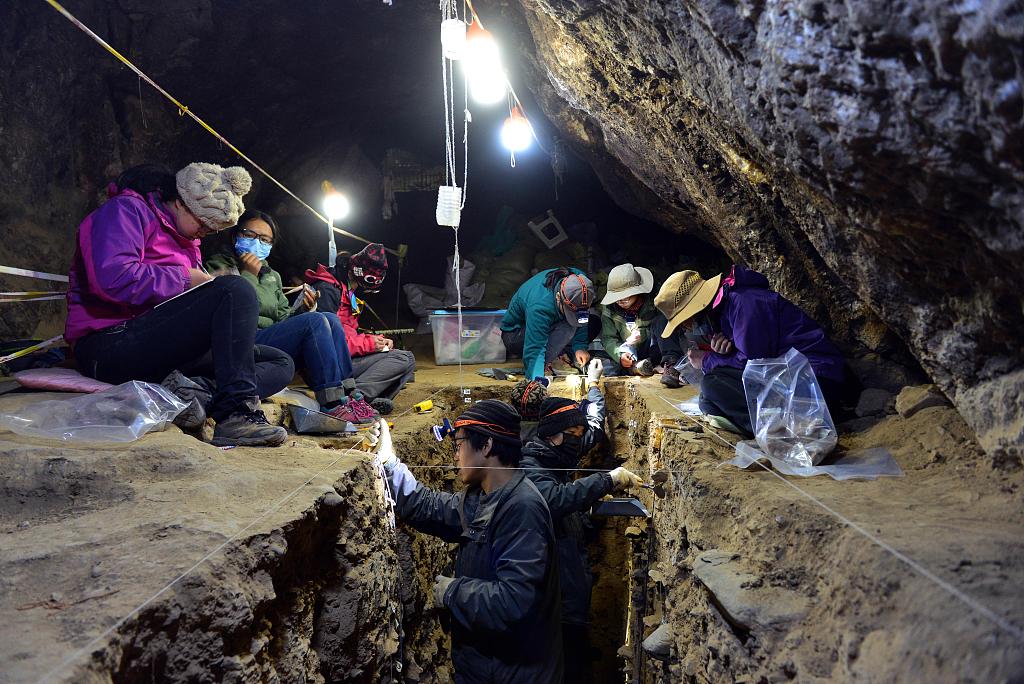(NLDO) - New discoveries from a Tibetan cave show that humans other than Denisovans only disappeared from the world at most 32,000 years ago.
A multinational study recently published in the journal Nature has provided new information about when the Denisovans actually became extinct: It could not have been around 40,000 years ago, but at least 32,000 years ago, when they were still living in Tibet.
They are a cousin species of our Homo sapiens, belonging to the same genus Homo (human genus), and interbred with our ancestors.
Many communities around the world still carry the DNA of this ancestor in their blood, the most "rich" being Asian- Pacific people.

A search for evidence of alien life in the Baishiya Karst Caves in Tibet, led by Lanzhou University (China) - Photo: VGC
According to Sci-News, the discovery of the "last aliens" in Tibet is based on the analysis of 2,500 mixed bone fragments collected by scientists from the Baishiya Karst cave over many years of work.
The bones include those of various animals with traces of human interaction, as well as ribs identified as belonging to Denisovans.
Previously, in 2019, a 160,000-year-old jawbone from the same cave was identified as originating from Denisovans.
In 2020, mtDNA from this ancient human species was found in cave sediments, indicating their presence at periods around 100,000 years ago, 60,000 years ago, and possibly 45,000 years ago.
New Denisovan ribs from Baishiya Karst cave date to about 48,000–32,000 years ago.
The new discovery helps shed more light on the question: "When and why did the Denisovans on the Tibetan plateau become extinct?".
In addition to human bones, the bones in the cave include those of bharal sheep, wild yaks, horses, extinct woolly rhinoceroses and spotted hyenas.
"The current evidence suggests that it was the Denisovans, rather than any other human group, who occupied the cave and efficiently utilized all available animal resources during their occupation," said co-author Dr Jian Wang from Lanzhou University (China).
Mass spectrometry analysis allows scientists to extract valuable information from often overlooked bone fragments, providing deeper insight into human activities.
This shows that in addition to eating animals, these ancient people also used animal bones to make other stone tools.
Previously, it was thought that the last hominins - including Denisovans and Neanderthals - became extinct somewhere around 40,000 years ago.
In recent years, some evidence has pushed this milestone back to between 30,000 and 40,000 years ago. The latest discovery in Tibet has further adjusted the historical timeline.
Not to mention, the discovery does not reveal any reason for their extinction, but only provides traces of a life with abundant food sources until at least 32,000 years ago.
Thus, it is entirely possible that they have existed alongside our species for much longer.
Source: https://nld.com.vn/phat-hien-ve-nguoi-khac-loai-cuoi-cung-o-tay-tang-196240706075130494.htm





































































































Comment (0)